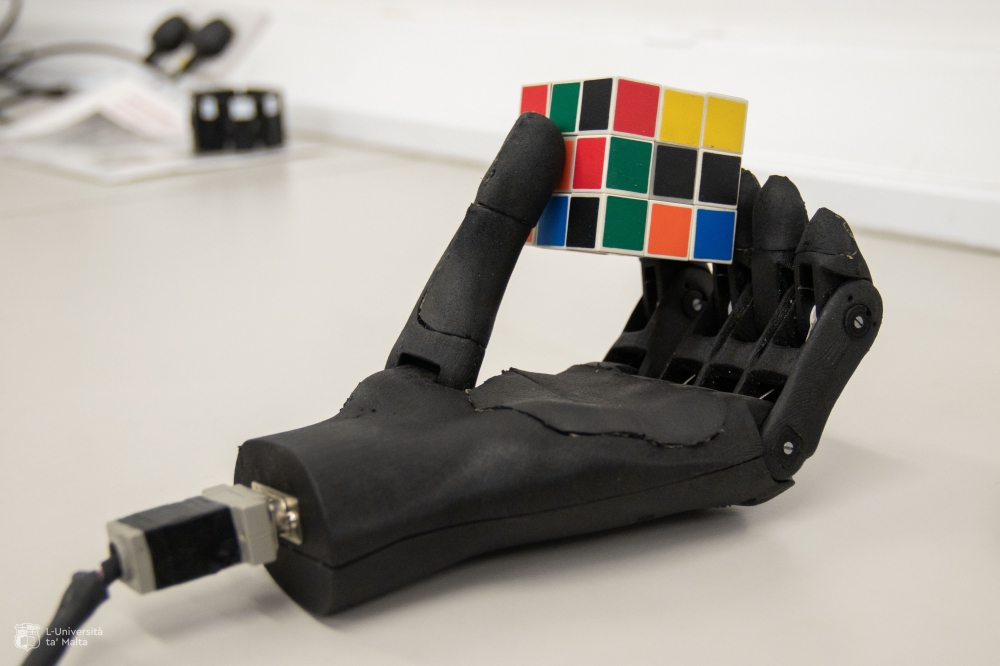University of Malta researchers devise ‘realistic-feel’ prosthetic hand
Researchers at University of Malta think their new prosthetic hand is less complex than other financially inaccessible prostheses that are heavy and have high rejection rates

University of Malta researchers have developed a new prosthetic hand which could become a commercially viable alternative to similar prostheses.
The scientists have managed to reduce the complexity associated with such machines, which requred the ring and little fingers move together with the middle finger rather than independently, so only three motors in total are required.
“Dexterous prostheses are typically very expensive, rendering them financially inaccessible to many potential users, and are also typically quite heavy, leading to high rejection rates by the users,” the researchers said.
But the MAProHand team, which includes representatives from the Orthopaedic Centre Malta, found that the active use of only three digits – the thumb, and the index and middle fingers – was enough to have a high degree of dexterity in manual function. “This indicated that complexity could be reduced while maintaining dexterity,” the researchers said.
They also found that amputees using such prostheses usually turn to the use of the remaining hand, which assumes the role of the dominant hand – irrespective of whether it had this role beforehand.
This meant that the prosthesis was only required to attain the functionality of a non-dominant hand, for example the left hand of a right-handed person, used primarily for grasping during activities that require two hands.
By reducing the required complexity and the number of distinct signals required to control the hand, University of Malta researchers say they can make their posthesis commercially viable.
The clever MAProHand system, a project funded under the national Fusion research and innovation programme through the Malta Council for Science and Technology, reads the forces applied by the prosthetic hand through force sensors fitted inside the gear systems. These send data to the user, where small flat motors vibrate against the skin, giving the user touch and force sensations.
Usually, other prostheses are highly complex, battery-powered five-fingered devices, controlled by faint electrical signals generated whenever the forearm muscles are clenched.
But these electrical signals – called surface electromyography, or sEMG – are generally counter intuitive: for example, a user might clench and unclench the muscles a number of times to select the required grasp. “This is of course not the way we use our natural hands!” the researchers said.
Instead they carried out experiments with human subjects using their natural hands to grasp various objects. Then, mathematically analysing the modes of hand motion sufficient to carry out daily tasks, they developed their own sEMG detection and analysis system. “It is able to detect and distinguish between these specific hand motions, as well as one hand-opening motion, to a very high reliability, both in persons having a natural hand as well as in persons missing a hand either from birth or through amputation.”
Meanwhile, the researchers carried out further experimentation, to find the minimum forces required to be applied by the prosthetic hand, designing the systems required to move it according to the required basic motions.
















.jpg)





